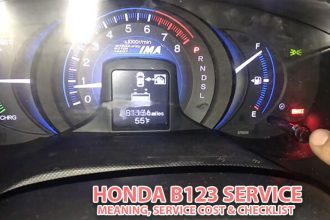Car Financing
Too many people look at the sticker price of the car and mistakenly believe that’s all they’ll pay for the car. The truth is that the total cost of automobile ownership includes many other areas of expense. For example, you’ll pay for the auto financing process and interest. Once you drive the car off the lot, you’ll have expenses related to insurance, licensing, and maintenance. Add in fuel and gadgets and your final price ends up being much higher than that first inviting number on the sticker.
What You Need to Know:
It’s also important to understand the differences between the advertised price and the dealer’s invoice price, as well as the difference between the new value of the car and the value when you leave the car lot. If you want to negotiate the best possible terms, think about financing before you visit a dealership, whether you’re looking for new or used cars. There are several other points to cover.
- Your realistic automobile needs (work commute, carpool, good fuel economy, etc.)
- The amount of insurance you can afford
- Dependability related to the mileage you expect
- Your family’s safety needs
Consider using a tool to find the True Market Value of the type of auto you’re interested in. Next, determine how much of your budget you can devote to a car payment and all related costs. Then, make sure you understand how financing, interest, and debt payments work.
Four Auto Loan Financing Steps:
Once you thoroughly understand your own finance and what you need from the vehicle, there are four steps to preparing yourself for the financing process
1) Understand Financial Terms
Make sure you understand what is meant by terms such as “interest,” “loan term,” “principal,” “down payment,” and “financing.” For example, a down payment is the amount of money you can pay toward the new vehicle. Sometimes this payment is made in cash and sometimes it is made as a “trade=in” when you turn in your existing car for the purchased auto.
2) Read and Understand Your Credit Score
Find your credit score at one of the three primary credit bureaus: Equifax, Experian, and TransUnion. Lenders look at your FICO score to determine how much of a risk you may be. (FICO stands for Fair Isaac Corporation and refers to the software used to calculate credit scores.) The low end of the score (or the “bad credit” end) gets down to about 300 points and an exceptional score (or good credit risk number) gets up to 800 and higher. A steady income and a FICO score of 720 or higher puts you in a great position to get financing.
3) Recognize a Good Deal
Depending on their industry focus and market conditions, lenders offer different interest rates on auto loans. Other factors that affect how your interest is calculated include your credit score, your loan amount, the difference between loan amount and the true value of the car, and the lender’s willingness to accept the risk. When it’s obvious that you understand how financing works, you’re more likely to enjoy an easy car financing process, comfortable terms, and competitive rates.
4) Read the Fine Print
After all of the details have been hashed out and before you sign the deal, read through all of the paperwork. Make sure the terms within the document are what you had agreed to and that there aren’t any additional features or blank spaces. Insist that those errors are corrected before you sign. Otherwise, you could sign the document and discover that the final documents and terms are much more expensive than you wanted.
Even very thrift car buyers have a hard time paying full price for the vehicle they want. Instead, they end up using an auto loan. When you do your homework, becoming familiar with APR comparisons and current interest rates, you could prepare to have an easy car financing process, as well as the confidence that you’re making wise decisions.







